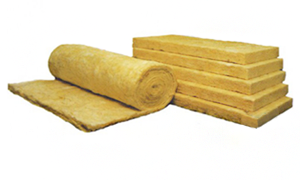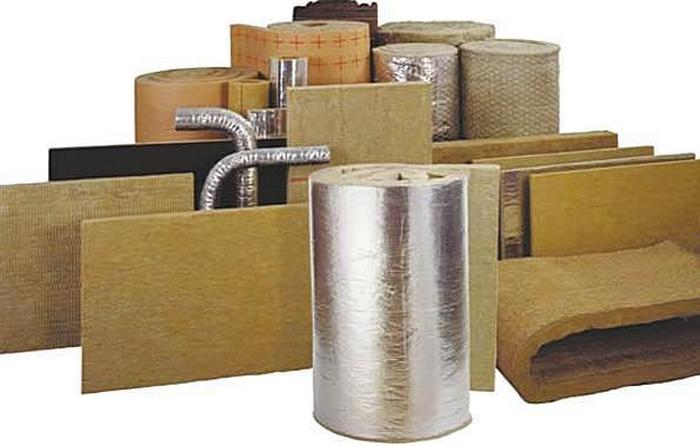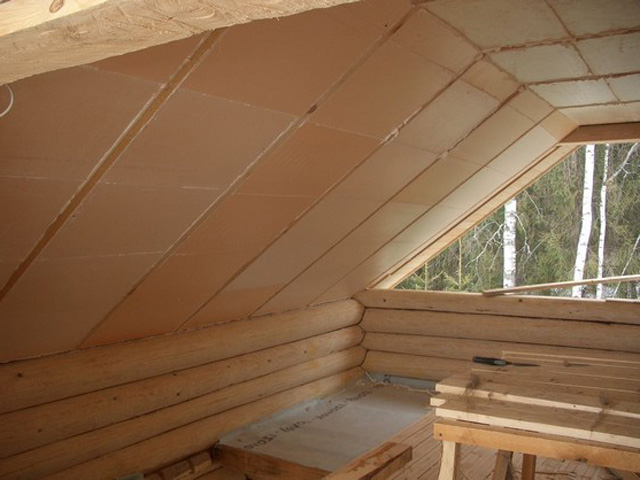5 options for heat and sound insulation of an apartment
Everyone wants their home to be comfortable in all respects, and among them, silence and warmth are almost the most important. To create an optimal microclimate and maximum comfort in the apartment, it is necessary to insulate it qualitatively and protect it from external sounds that come from the street, motorways or from neighboring apartments. To kill two birds with one stone will help special materials belonging to the class of heat and sound insulators. Due to their structure, they regulate the indoor microclimate and absorb sound waves. In building stores you can find several types of such materials.
No. 1. Heat and sound insulating plates
 Heat and sound insulating plates - one of the most popular materials that are used, if necessary, to simultaneously shield your house from noise, and increase its thermal insulation so that it is comfortable to stay there in summer and winter with minimal heating or air conditioning costs. It is a natural material, which includes only coniferous wood, and there are no adhesives, synthetic additives or other harmful substances. First, the wood is ground, then wetted, so that it is easier to form a homogeneous canvas, then pressing occurs under the influence of high temperatures. During this process, the wood is compacted, and then the drying step follows, after which the material is already ready for use. Sheets can vary in thickness and other parameters so that you can choose the best option for each specific room.
Heat and sound insulating plates - one of the most popular materials that are used, if necessary, to simultaneously shield your house from noise, and increase its thermal insulation so that it is comfortable to stay there in summer and winter with minimal heating or air conditioning costs. It is a natural material, which includes only coniferous wood, and there are no adhesives, synthetic additives or other harmful substances. First, the wood is ground, then wetted, so that it is easier to form a homogeneous canvas, then pressing occurs under the influence of high temperatures. During this process, the wood is compacted, and then the drying step follows, after which the material is already ready for use. Sheets can vary in thickness and other parameters so that you can choose the best option for each specific room.
Heat and sound insulating plates - excellent insulationwhose effectiveness can be compared to mineral wool. Such material helps to maintain the same temperature in the room, preventing the house from quickly warming up in the summer and cooling in the winter. Structural features allow you to reliably detain extraneous sounds, isolate those in the apartment from shock and airborne noise, which makes it possible to shield yourself from loud neighborly conversations and almost neutralize sound from working instruments. In addition, the plates can improve the acoustics of the room, and save him from the effect of the echo.
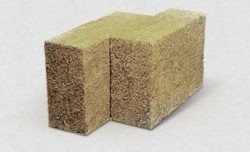 But only on sound absorption and thermal insulation advantages of the material not limited to. So, stoves are able to regulate the microclimate in the room, absorb excess moisture and give it away when the air in the room becomes too dry. It is worth noting some of the features that appear when in contact with water. The wood fibers of the material are somewhat reminiscent of felt, which means that the plate, even when absorbing about 20% moisture in relation to its volume, will still retain its original geometric dimensions. In addition, it is a fairly durable material that will last at least 50 years. As a rule, one of the sides of the plates is smooth and is intended for further finishing, which will be simplified as much as possible, because the surface does not need to be leveled. The installation of heat-insulating plates is not complicated: they can be mounted both on glue and on the crate, and any finishing finish can be used on top of the material: wallpaper, paint, plaster, etc.
But only on sound absorption and thermal insulation advantages of the material not limited to. So, stoves are able to regulate the microclimate in the room, absorb excess moisture and give it away when the air in the room becomes too dry. It is worth noting some of the features that appear when in contact with water. The wood fibers of the material are somewhat reminiscent of felt, which means that the plate, even when absorbing about 20% moisture in relation to its volume, will still retain its original geometric dimensions. In addition, it is a fairly durable material that will last at least 50 years. As a rule, one of the sides of the plates is smooth and is intended for further finishing, which will be simplified as much as possible, because the surface does not need to be leveled. The installation of heat-insulating plates is not complicated: they can be mounted both on glue and on the crate, and any finishing finish can be used on top of the material: wallpaper, paint, plaster, etc.
No. 2. Basalt slabs
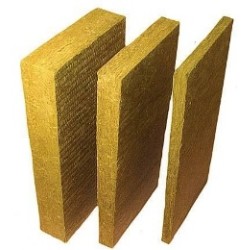 Basalt slabs - another unique material that combines the properties of insulation and sound insulation, and all thanks to the features of the structure.The manufacturing process begins with the melt of raw materials, which are used as rocks such as basalt, clay, limestone, dolomite. Further, the melt turns into many fine fibers that bind to each other thanks to the addition of special substances. The final stage is drying at high temperatures, which gives the material additional useful operational qualities, including strength and elasticity.
Basalt slabs - another unique material that combines the properties of insulation and sound insulation, and all thanks to the features of the structure.The manufacturing process begins with the melt of raw materials, which are used as rocks such as basalt, clay, limestone, dolomite. Further, the melt turns into many fine fibers that bind to each other thanks to the addition of special substances. The final stage is drying at high temperatures, which gives the material additional useful operational qualities, including strength and elasticity.
The fibrous structure of the slabs determines and low thermal conductivity (about 0.04 W / m * K), but this characteristic largely depends on the moisture content of the material: in the dry state, the heat-insulating properties are the best, and as they get wet they worsen. The structure of basalt slabs allows you to protect your home from the most annoying low frequency noise, and these are the steps of neighbors, blows of different instruments, etc. The material also effectively protects and from high-frequency noise and significantly reduces the re-vibration time, because the sound wave is absorbed and converted into thermal energy.
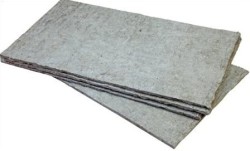 Basalt slabs are distinguished by fire-fighting properties, good vapor permeability, which allows the walls to "breathe" and remove excess moisture into the atmosphere. This is a safe material with high strength, which does not change during operation, and this property allows the use of basalt slabs when arranging heat and sound insulation systems at any objects. High strength characteristics are explained by the fact that the fibers are reoriented during the production process. The plates are resistant to decay, aggressive environments, can last 70 years or more, which is explained by the origin of the material: in fact, it is a stone elongated in a thread. This type of thermal and acoustic insulation can be called safe for health and environmentally friendly. Moreover, the material is easily cut, which makes it possible to simplify the process of its installation and even perform it yourself.
Basalt slabs are distinguished by fire-fighting properties, good vapor permeability, which allows the walls to "breathe" and remove excess moisture into the atmosphere. This is a safe material with high strength, which does not change during operation, and this property allows the use of basalt slabs when arranging heat and sound insulation systems at any objects. High strength characteristics are explained by the fact that the fibers are reoriented during the production process. The plates are resistant to decay, aggressive environments, can last 70 years or more, which is explained by the origin of the material: in fact, it is a stone elongated in a thread. This type of thermal and acoustic insulation can be called safe for health and environmentally friendly. Moreover, the material is easily cut, which makes it possible to simplify the process of its installation and even perform it yourself.
No. 3. Ecowool
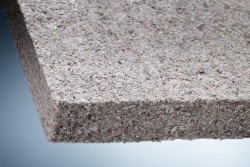 Ecowool already gives its name what it is natural material, and therefore not able to cause allergies and other diseases in humans. This is one of its main advantages. Ecowool is made from the waste from the cardboard industry, the remains of newspapers, corrugated packaging, as well as from defective printed products, etc. As a result, the material consists of more than 80% cellulose. Also, in the production, boric acid is added - a powerful antiseptic that resists the development of fungus and mold, and flame retardants - substances that reduce the ability to ignite and resist burning. Often sodium tetraborate acts as a flame retardant. As is clear from the composition, there are no synthetic substances in ecowool, which gives the right to call it one of the most environmentally friendly heat and sound insulators. And when it burns, no specific toxic substances are released.
Ecowool already gives its name what it is natural material, and therefore not able to cause allergies and other diseases in humans. This is one of its main advantages. Ecowool is made from the waste from the cardboard industry, the remains of newspapers, corrugated packaging, as well as from defective printed products, etc. As a result, the material consists of more than 80% cellulose. Also, in the production, boric acid is added - a powerful antiseptic that resists the development of fungus and mold, and flame retardants - substances that reduce the ability to ignite and resist burning. Often sodium tetraborate acts as a flame retardant. As is clear from the composition, there are no synthetic substances in ecowool, which gives the right to call it one of the most environmentally friendly heat and sound insulators. And when it burns, no specific toxic substances are released.
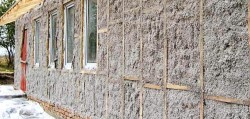 Material differs relatively low thermal conductivity, which is at the level of 0.032 W / m * K, which is approximately equivalent to the best mineral wool insulation. But in terms of sound insulation ecowool is even more effectivethan basalt slabs, and to create the same effect it is necessary to use a much less thin layer of material. The elastic structure of ecowool allows you to delay sound waves, thereby protecting the inhabitants of the apartment of noise of any nature. A striking example of the soundproofing characteristics of a material: a 7.5 cm thick wooden frame structure on which gypsum plasterboards with a total thickness of 1.3 cm are attached on both sides reduces external noise by 37 dB. If on one side of this design you attach ecowool 2.5 cm thick, then the soundproofing of the partition will increase to 65 dB. Another example: a drywall sheet 12.5 mm thick with an ecowool layer of 5 cm has a sound absorption index of 63 dB.If we take into account the fact that a person already reduces the external noise by 10 dB as a 2-fold reduction, then with ecowool you can achieve incredible results and make your apartment comfortable.
Material differs relatively low thermal conductivity, which is at the level of 0.032 W / m * K, which is approximately equivalent to the best mineral wool insulation. But in terms of sound insulation ecowool is even more effectivethan basalt slabs, and to create the same effect it is necessary to use a much less thin layer of material. The elastic structure of ecowool allows you to delay sound waves, thereby protecting the inhabitants of the apartment of noise of any nature. A striking example of the soundproofing characteristics of a material: a 7.5 cm thick wooden frame structure on which gypsum plasterboards with a total thickness of 1.3 cm are attached on both sides reduces external noise by 37 dB. If on one side of this design you attach ecowool 2.5 cm thick, then the soundproofing of the partition will increase to 65 dB. Another example: a drywall sheet 12.5 mm thick with an ecowool layer of 5 cm has a sound absorption index of 63 dB.If we take into account the fact that a person already reduces the external noise by 10 dB as a 2-fold reduction, then with ecowool you can achieve incredible results and make your apartment comfortable.
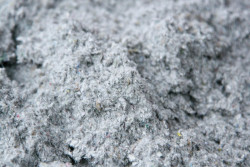 A layer of ecowool is able to absorb excess moisture from the room and give it away, but at the same time, the operational properties of the material do not deteriorate. Since the structure of the material is capillary, microdrops do not accumulate in it - moisture enters the atmosphere, thereby regulating the microclimate in the room. Vapor barrier when using this material is not needed, which simplifies the process of arranging such heat and sound insulation and reduces the cost of the structure.
A layer of ecowool is able to absorb excess moisture from the room and give it away, but at the same time, the operational properties of the material do not deteriorate. Since the structure of the material is capillary, microdrops do not accumulate in it - moisture enters the atmosphere, thereby regulating the microclimate in the room. Vapor barrier when using this material is not needed, which simplifies the process of arranging such heat and sound insulation and reduces the cost of the structure.
Despite the fact that ecowool is 80% paper, it resists fire well: it ignites poorly and does not support its distribution. It's all about flame retardants, which are part of the material, and water molecules contained in salts of boric acid are released during heating and contribute to spontaneous attenuation of ecowool. Due to the presence of boric acid, the material is protected from the spread of mold, bacteria, and rodents in ecowool will not start. This material can be called durable, since it will last at least 50 years.
Number 4. Foam glass
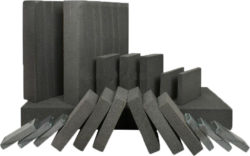 Foam glass - A very popular insulation with excellent soundproofing parameters. The material has long been actively used in European countries, and here it only makes itself felt. It is interesting that it was invented in the middle of the last century, but at that time its manufacturing technology was so complicated and expensive that it did not become popular. Today, technology has become much more advanced, and although foamglass can still not be called cheap material, it has become a popular thermal insulation material.
Foam glass - A very popular insulation with excellent soundproofing parameters. The material has long been actively used in European countries, and here it only makes itself felt. It is interesting that it was invented in the middle of the last century, but at that time its manufacturing technology was so complicated and expensive that it did not become popular. Today, technology has become much more advanced, and although foamglass can still not be called cheap material, it has become a popular thermal insulation material.
Only safe components are used in the manufacture: silicate glass and some kind of blowing agent, for example, coke, coal, soot or anthracite. After heating the mixture to 10000C, the reaction and foaming, the volume of the material increases by 15 times, and in the structure appears a mass of bubbles saturated with air or carbon dioxide. In such a structure, all the useful operational properties of foam glass are hidden.
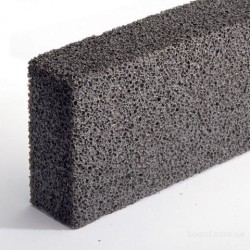 The heat-insulating properties of the material, although slightly inferior to ecowool, still give the right to use foam glass as a good insulation. Coefficient of thermal conductivity is 0.045 W / m * K, but this indicator does not change during operation, and after 50-60 years it remains exactly the same, which can not be said about many other heaters. Material structure helps him absorb external noises of different nature: for example, a 10 cm foam glass layer can reduce noise by 56 dB.
The heat-insulating properties of the material, although slightly inferior to ecowool, still give the right to use foam glass as a good insulation. Coefficient of thermal conductivity is 0.045 W / m * K, but this indicator does not change during operation, and after 50-60 years it remains exactly the same, which can not be said about many other heaters. Material structure helps him absorb external noises of different nature: for example, a 10 cm foam glass layer can reduce noise by 56 dB.
Among other material benefits - resistance to moisture, breathability, low density, which allows not to heavily weight the structure. Foam glass has good vapor permeability, retains all its operational properties in a wide temperature range. In addition, this is a completely non-combustible material, because in fact it is an ordinary glass. Previously, foam glass was used in the floors of nuclear power plants, in the construction of expensive hotels and in other facilities where the highest demands were made on safety. From the composition of the material it is clear that it is safe, will not become a place for the development of rodents, mold, bacteria, etc. Foam glass has good adhesion to almost all building materials and boasts durability. Only flaw this heat and sound insulator - its high cost.
No. 5. Polyethylene foam
 Polyethylene foam - the material obtained from polyethylene has a closed-porous structure, due to which it is widely used as a heat and sound insulator. It has excellent thermal insulation properties, as evidenced by coefficient of thermal conductivityat the level of 0.038 W / m * K. As insulation material foamed polyethylene it is used more often, and a layer of 1 cm is able to replace 5 cm of mineral wool in effectiveness. As a sound insulator, the material also shows itself perfectly, absorbing a significant part of the sound waves, which is possible due to its structure.
Polyethylene foam - the material obtained from polyethylene has a closed-porous structure, due to which it is widely used as a heat and sound insulator. It has excellent thermal insulation properties, as evidenced by coefficient of thermal conductivityat the level of 0.038 W / m * K. As insulation material foamed polyethylene it is used more often, and a layer of 1 cm is able to replace 5 cm of mineral wool in effectiveness. As a sound insulator, the material also shows itself perfectly, absorbing a significant part of the sound waves, which is possible due to its structure.
Among other things, this material is completely not afraid of water and almost does not absorb it even with direct contact. It is biologically stable, non-toxic and durable, and its service life is about 80-100 years. The process of its transportation and installation is simple, but there are some disadvantages. Among them are flammability and sensitivity to ultraviolet rays, therefore, during transportation, installation and operation it is necessary to carefully protect it from direct sunlight.



